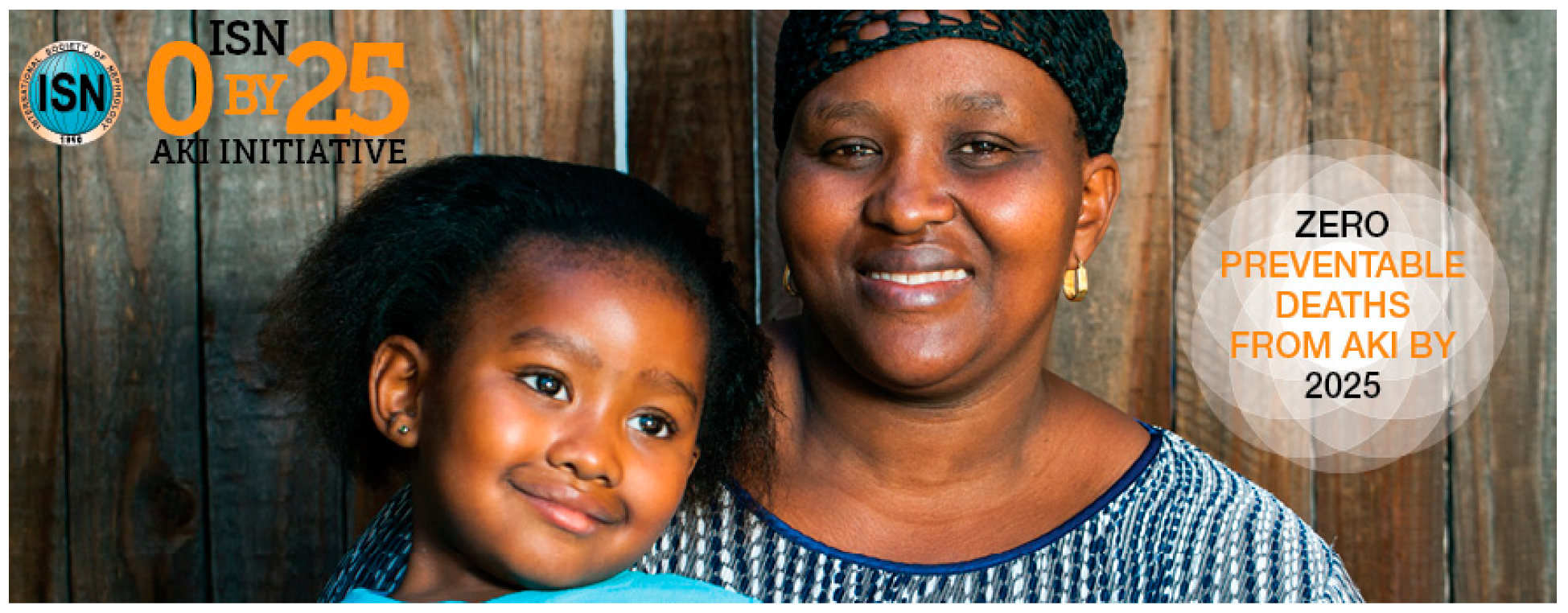Chronic Kidney Disease: The Complex History of the Organization of Long-Term Care and Bioethics. Why Now, More Than Ever, Action is Needed
Abstract
“In public health, we can’t do anything without surveillance. That’s where public health begins.”—David Satcher, MD, PhD, U.S. Surgeon General, in 1998–2002
- How to estimate the true prevalence and economic burden of CKD
- How to implement efficient surveillance systems
- How to test new models of prevention and health care organization
- How to evaluate their effectiveness
- How to ensure equity in access to preventive medicine and care
- How to ensure the ecological sustainability of kidney treatments
Author Contributions
Funding
Conflicts of Interest
References
- El Nahas, M.; Bello, A.K. Chronic kidney disease: The global challenge. Lancet 2005, 365, 331–340. [Google Scholar] [CrossRef]
- Wang, H.; Naghavi, M.; Allen, C.; Barber, R.M.; Bhutta, Z.A.; Carter, A.; Casey, D.C.; Charlson, F.J.; Chen, A.Z.; Coates, M.M.; et al. GBD 2015 Mortality and Causes of Death Collaborators. Global, regional, and national life expectancy, all-cause mortality, and cause-specific mortality for 249 causes of death, 1980–2015: A systematic analysis for the Global Burden of Disease Study 2015. Lancet 2016, 388, 1459–1544. [Google Scholar] [CrossRef]
- Winearls, C.G.; Glassock, R.J. Dissecting and refining the staging of chronic kidney disease. Kidney Int. 2009, 75, 1009–1014. [Google Scholar] [CrossRef] [PubMed]
- Morgan, B.R.; Ibrahim, H.N. Long-term outcomes of kidney donors. Curr. Opin. Nephrol. Hypertens. 2011, 20, 605–609. [Google Scholar] [CrossRef] [PubMed]
- Segev, D.L.; Muzaale, A.D.; Caffo, B.S.; Mehta, S.H.; Singer, A.L.; Taranto, S.E.; McBride, M.A.; Montgomery, R.A. Perioperative mortality and long-term survival following live kidney donation. JAMA 2010, 303, 959–966. [Google Scholar] [CrossRef] [PubMed]
- Garg, A.X.; Nevis, I.F.; McArthur, E.; Sontrop, J.M.; Koval, J.J.; Lam, N.N.; Hildebrand, A.M.; Reese, P.P.; Storsley, L.; Gill, J.S.; et al. Gestational hypertension and preeclampsia in living kidney donors. N. Engl. J. Med. 2015, 372, 124–133. [Google Scholar] [CrossRef] [PubMed]
- Coresh, J. Update on the Burden of CKD. J. Am. Soc. Nephrol. 2017, 28, 1020–1022. [Google Scholar] [CrossRef] [PubMed]
- Hossain, M.P.; Goyder, E.C.; Rigby, J.E.; El Nahas, M. CKD and poverty: A growing global challenge. Am. J. Kidney Dis. 2009, 53, 166–174. [Google Scholar] [CrossRef] [PubMed]
- Matsuda, K.; Fissell, R.; Ash, S.; Stegmayr, B. Long-Term Survival for Hemodialysis Patients Differ in Japan Versus Europe and the USA. What Might the Reasons Be? Artif. Organs 2018, 42, 1112–1118. [Google Scholar] [CrossRef] [PubMed]
- Jha, V.; Garcia-Garcia, G.; Iseki, K.; Li, Z.; Naicker, S.; Plattner, B.; Saran, R.; Wang, A.Y.; Yang, C.W. Chronic kidney disease: Global dimension and perspectives. Lancet 2013, 382, 260–272. [Google Scholar] [CrossRef]
- Vanholder, R.; Lameire, N.; Annemans, L.; Van Biesen, W. Cost of renal replacement: How to help as many as possible while keeping expenses reasonable? Nephrol. Dial. Transpl. 2016, 31, 1251–1261. [Google Scholar] [CrossRef] [PubMed]
- Wongrakpanich, S.; Susantitaphong, P.; Isaranuwatchai, S.; Chenbhanich, J.; Eiam-Ong, S.; Jaber, B.L. Dialysis Therapy and Conservative Management of Advanced Chronic Kidney Disease in the Elderly: A Systematic Review. Nephron 2017, 137, 178–189. [Google Scholar] [CrossRef] [PubMed]
- Mehta, R.L.; Cerdá, J.; Burdmann, E.A.; Tonelli, M.; García-García, G.; Jha, V.; Susantitaphong, P.; Rocco, M.; Vanholder, R.; Sever, M.S.; et al. International Society of Nephrology’s 0by25 initiative for acute kidney injury (zero preventable deaths by 2025): A human rights case for nephrology. Lancet 2015, 385, 2616–2643. [Google Scholar] [CrossRef]
- Liyanage, T.; Ninomiya, T.; Jha, V.; Neal, B.; Patrice, H.M.; Okpechi, I.; Zhao, M.H.; Lv, J.; Garg, A.X.; Knight, J.; et al. Worldwide access to treatment for end-stage kidney disease: A systematic review. Lancet 2015, 385, 1975–1982. [Google Scholar] [CrossRef]
- Sobhy, S.; Dharmarajah, K.; Arroyo-Manzano, D.; Navanatnarajah, R.; Noblet, J.; Zamora, J.; Thangaratinam, S. Type of obstetric anesthesia administered and complications in women with preeclampsia in low- and middle-income countries: A systematic review. Hypertens. Pregnancy 2017, 36, 326–336. [Google Scholar] [CrossRef] [PubMed]
- Blagg, C.R. The early years of chronic dialysis: The Seattle contribution. Am. J. Nephrol. 1999, 19, 350–354. [Google Scholar] [CrossRef] [PubMed]
- Porta, M.A. Dictionary of Epidemiology, 5th ed.; Oxford University Press: London, UK, 2008. [Google Scholar]
- Centers for Disease Control and Prevention. CDC’s vision for public health surveillance in the 21st century. MMWR Surveill. Summ. 2012, 61, 1–40. [Google Scholar]
- Perico, N.; Remuzzi, G. Prevention programs for chronic kidney disease in low-income countries. Intern. Emerg. Med. 2016, 11, 385–389. [Google Scholar] [CrossRef] [PubMed]
- Luyckx, V.A.; Tonelli, M.; Stani, J.W. The global burden of kidney disease and sustainable development goals. Bull. World Health Organ. 2018, 96, 369–440. [Google Scholar] [CrossRef] [PubMed]


© 2019 by the authors. Licensee MDPI, Basel, Switzerland. This article is an open access article distributed under the terms and conditions of the Creative Commons Attribution (CC BY) license (http://creativecommons.org/licenses/by/4.0/).
Share and Cite
Versino, E.; Piccoli, G.B. Chronic Kidney Disease: The Complex History of the Organization of Long-Term Care and Bioethics. Why Now, More Than Ever, Action is Needed. Int. J. Environ. Res. Public Health 2019, 16, 785. https://doi.org/10.3390/ijerph16050785
Versino E, Piccoli GB. Chronic Kidney Disease: The Complex History of the Organization of Long-Term Care and Bioethics. Why Now, More Than Ever, Action is Needed. International Journal of Environmental Research and Public Health. 2019; 16(5):785. https://doi.org/10.3390/ijerph16050785
Chicago/Turabian StyleVersino, Elisabetta, and Giorgina Barbara Piccoli. 2019. "Chronic Kidney Disease: The Complex History of the Organization of Long-Term Care and Bioethics. Why Now, More Than Ever, Action is Needed" International Journal of Environmental Research and Public Health 16, no. 5: 785. https://doi.org/10.3390/ijerph16050785
APA StyleVersino, E., & Piccoli, G. B. (2019). Chronic Kidney Disease: The Complex History of the Organization of Long-Term Care and Bioethics. Why Now, More Than Ever, Action is Needed. International Journal of Environmental Research and Public Health, 16(5), 785. https://doi.org/10.3390/ijerph16050785





